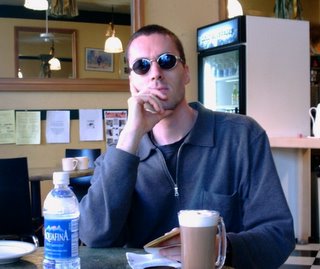Content rules
Last Sunday (May 14, 2006) I read an intriguing article in the New York Times about how Japanese spend a considerate amount of time in so called “Grand Cyber Café’s”, a mixture of game library, internet café, and social gathering place. They are using these communication and entertainment hubs as an opportunity “to be free of their social status” without the constraints of a constant norm driven self-presentation as successful and productive parts of their society. The success of these centers is summarized in a fascinating quote by a young Japanese man who frequents these centers very often: “No-face-man, no-ID-man, no-pride-man”. It’s all about losing yourself in the entertaining and interaction content universe of virtual reality. Besides the fascination with the Ueber-trend phenomena of the Japanese society, what’s the relevance of this seemingly obscure example for our business, the marketing world?
Too few marketers understand that they are being less and less in the communication industry but more and more in the content creation business. Communication and content are evolving into the two sides of an inseparable coin. They might have been always close but they are merging into ONE marketing value proposition. But surprisingly most marketers neglect the content element of marketing and continue to focus almost solely on the communication side of their work. One of the rare exception is Bob Greenberg, CEO of RG/A, who is relentlessly pushing the need for relevant content, almost pushing the balance too far on the content side with the potential of neglecting the importance of the communication dimension.
Why do I differentiate between communication and content? My two key reasons are:
- Most marketers equal content with “the message” which delegates the critical importance of content creation to the job of copy writers struggling with the right words in the most relevant manner. But real content is more than messaging, it’s the power of creating unique experience in an interactive and engaging manner by filling the interaction space between brand and consumer with relevant content
- Communication has its own important success factors: Targeted channel selection and management, relevant timing and spacing, and appealing creative look and feel; content has different success factors: Level of interactivity (see my blog about “Architecture of participation”), Media-Modularity to expand content across multiple media/channels, and Relevance for the targeted consumer segment. Only the best work across all communication and content success factors will build successful marketing programs.
Let’s return to our Japanese man who spends hours over hours in virtually created content worlds while using multiple communication channels (from email to blogs to game worlds to old fashioned website). For him there is no difference anymore between content and communication, it’s one stream of emerging himself fully without the limits of his surrounding society. That’s what marketing at its best does: creating experiences that are unique, engaging, and that empower the consumer to move to a different mind set. It almost sounds like a 19th century bibliophile talking about his passion of reading books, or?


2 Comments:
Thank you for sharing a nice article.
Congratulations on your posts, not go from your site successful.
When you love what you do then work doesn’t seem like work!If creativity is what you are all about and if animation isyour first love, then rush to ZICA today! And let yourpassion lead you!Mercedes has set the pace in taking initiatives. In August, it signed up as the automotive partner for all motor sporting events at the Budhh International Circuit in Greater Noida for two years. The Mercedes SLS AMG-with top speed of 317 km/hr-will be the 'safety car' for all racing events at the circuit. It will also provide cars to race officials.
Mercury Control Arm
Post a Comment
<< Home